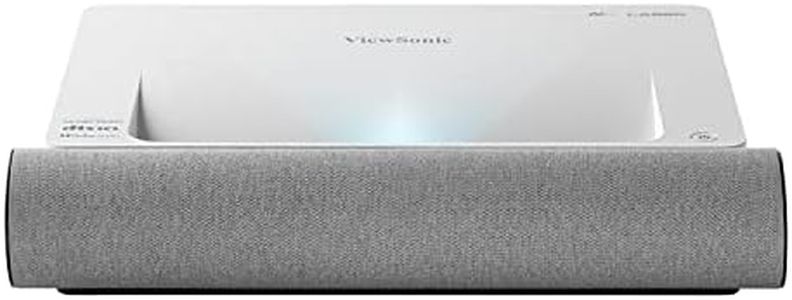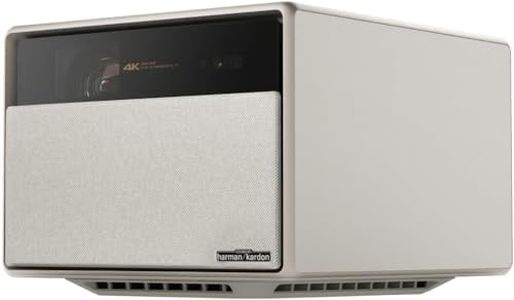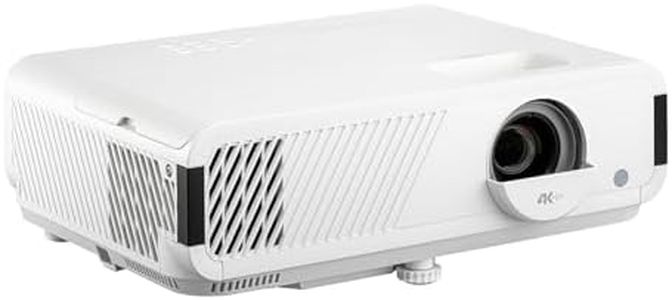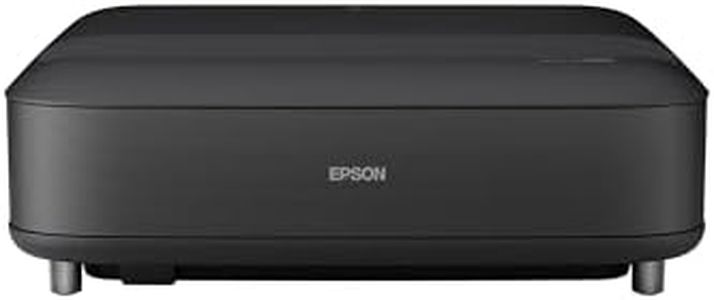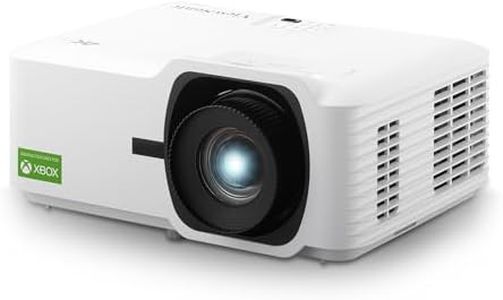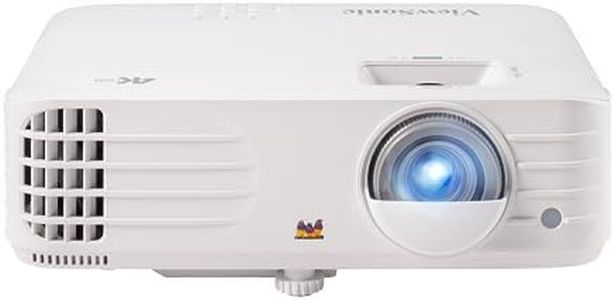We Use CookiesWe use cookies to enhance the security, performance,
functionality and for analytical and promotional activities. By continuing to browse this site you
are agreeing to our privacy policy
10 Best Gaming Projector
From leading brands and best sellers available on the web.Buying Guide for the Best Gaming Projector
Choosing the right gaming projector can greatly enhance your gaming experience, turning your space into a more immersive environment. Unlike traditional monitors or TVs, projectors offer a larger display, which makes games feel more dynamic and engaging. When looking for a gaming projector, it’s important to understand certain key specs to match the projector’s abilities with your gaming habits and room setup. Think about where you'll use the projector, the types of games you enjoy, and the environment—like how dark your room is—so you can select features that will best meet your needs.ResolutionResolution refers to the number of pixels a projector can display, which affects the sharpness and detail of the image. For gaming, a higher resolution means you see finer details and clearer graphics. Projectors typically come in 720p (HD), 1080p (Full HD), and 4K (Ultra HD). 720p is suitable for casual gaming or smaller screen sizes, 1080p is good for most gamers who want a crisp experience without stretching the image, and 4K provides top-tier clarity for those who demand the finest visuals on a large screen. If you play visually detailed or cinematic games, or plan to use a very large screen size, prioritize higher resolutions.
Input LagInput lag is the delay between your actions on the controller and what you see on screen. A lower input lag means a more responsive experience, crucial for fast-paced or competitive gaming. Input lag is usually measured in milliseconds (ms). Under 20ms is excellent for competitive gaming, 20-40ms is good for general play, and above 40ms may feel sluggish in quick-reaction games. If you mostly play fast-action or multiplayer games, look for projectors specifically advertising low input lag.
Refresh RateRefresh rate indicates how many times per second the image on the screen is updated, usually shown as Hertz (Hz). A higher refresh rate makes fast movement look smoother, reducing motion blur. Standard projectors often run at 60Hz, which is fine for most games, while some advanced models go up to 120Hz or more, which is ideal for high-speed or competitive gaming. If you play games with lots of fast action, or you’re sensitive to motion blur, consider a higher refresh rate.
Brightness (Lumens)Brightness, measured in lumens, indicates how well the projector can show a bright and clear image, especially in rooms with ambient light. Projectors vary from about 1,500 to 3,500 or more lumens. Lower lumens (1,500-2,000) work well in very dark or dedicated gaming rooms, while higher values (2,500+) are better if you want to play in rooms where you can’t fully control lighting. If you’ll use the projector in daytime or in shared spaces that aren’t pitch-black, prioritize higher brightness.
Throw Distance and Screen SizeThrow distance is how far from the wall or screen the projector must be placed to get a specific image size. Some projectors can create a large image from close to the screen (short-throw), while others require more distance (standard-throw). Know your room size before buying: if space is limited, look for a short-throw projector. If you have more distance, a standard projector can offer flexibility in image size. Pick a projector that produces the screen size you want from where you plan to position it.
ConnectivityConnectivity refers to the input options available, such as HDMI, USB, or wireless features, which allow you to connect gaming consoles, PCs, or streaming devices. Most modern gaming devices use HDMI, so make sure your projector has enough ports for your needs, especially if you plan to switch between multiple devices. Wireless features, like screen mirroring, can add convenience but might introduce slight delays, so direct, wired connections are best for gaming performance.
Speaker Quality and Audio OutputMost projectors have built-in speakers, but their sound quality often isn’t great, especially for immersive gaming. If sound is important, check if the projector has audio output options (like a headphone jack or Bluetooth) to connect to external speakers or a soundbar. This helps ensure you get high-quality sound to match the visuals, especially if you play story-driven or multiplayer games where audio cues matter.

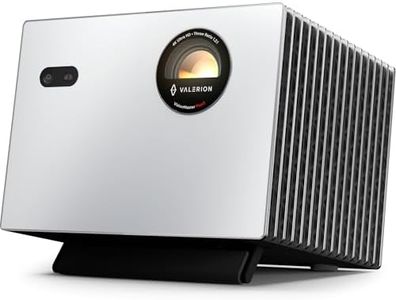
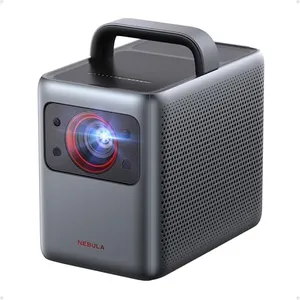
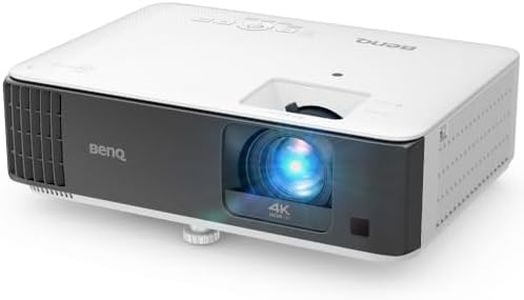
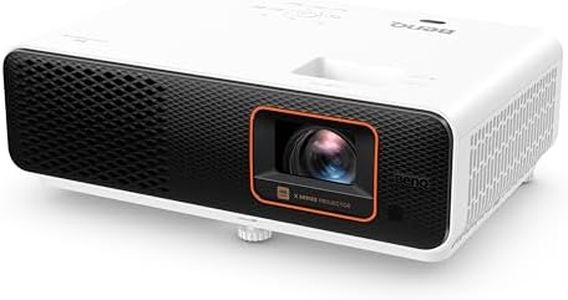
![Smart Mini Projector 4K [Netflix Officially/Auto Focus/Keystone], VOPLLS 600 ANSI WiFi Bluetooth 1080P Full HD Portable Projectors, Moive Projector for Bedroom/Outdoor/Phone](https://images-proxy.bestreviews.guide/lrqXmJbMnB5qRp2oVfgPXA-Siq0=/0x300/https://m.media-amazon.com/images/I/51raUXf12qL._AC_CX679_.jpg)

![[Netflix Officially & Dolby Audio] XuanPad 4K Projector with WiFi and Bluetooth, Auto Focus & Keystone, 1.1 Short Throw, Smart Home Movie Projector with 280°Adjustable Stand](https://images-proxy.bestreviews.guide/h5n2ZBU9u0DBbZsaBoVYBiU-ywE=/0x300/https://m.media-amazon.com/images/I/51n6xF8832L._AC_CX679_.jpg)
![Projector 4K [Google TV/Dolby Audio] Netflix Disney+ Official,1000 ANSI Auto Focus/Keystone 1080P Portable Projector,Voice Control, WiFi6 Bluetooth HDR10 Smart Movie Home Projector for Bedroom Outdoor](https://images-proxy.bestreviews.guide/CLWRT1xww6yQE3TnOXPYAZe2Be4=/0x300/https://m.media-amazon.com/images/I/51DC3fX1yQL._AC_CX679_.jpg)
